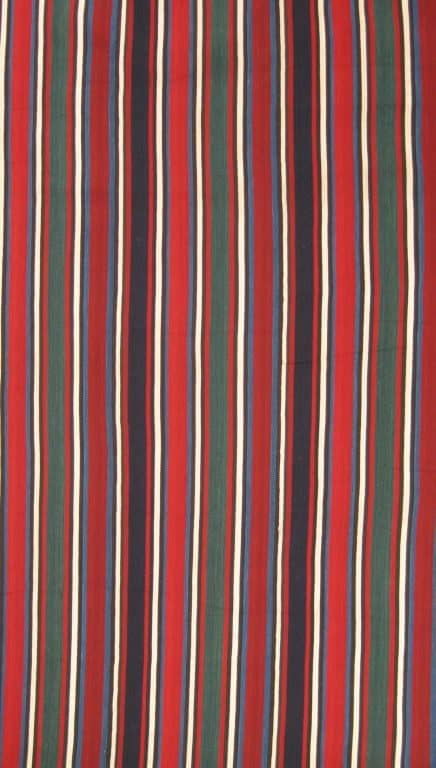Antique Persian ShahSavan Jajim
Antique Persian ShahSavan Jajim
reference:
5104
dimensions:
3.16m x 2m / 10'5''x 6'7''
Description
ShahSavan rukorsi made from a jajim in Persian Azerbaijan in the late 19th century. Jajims were woven in narrow strips, usually on a horizontal loom, to very great lengths. The flat weave material was then cut up to the required length and several panels sewn together, often quite coarsely with a visible seam. This enabled the weaver to produce all sorts of sizes, depending on what function the finished jajim was supposed to serve: sometimes as a sofreh (eating cloth, often of a small squarish size), a bag, a lahaf (the cover for a sleeping quilt) or, as in this case, as a rukorsi used to cover the wooden framework around a pan of coals placed in a recess in the central area of a Persian village house; the members of the family could then sit around this recess, their feet covered by the rukorsi to keep them warm. Generally speaking, the weaving of jajims requires great skill on the part of the weaver, with the correct tension on the warps over such a great length being one of the issues. ShahSavan jajims are prized for the clarity of their colours and the balance of design. Each jajim has its own character since it was usually the work of one woman, from the spinning of the wool to the weaving itself, and even the dyeing was frequently done by the same hand. Since these cloths were exposed to a lot of use, it is now difficult to find 19th century examples in good condition.
All wool, excellent condition
£3,500

